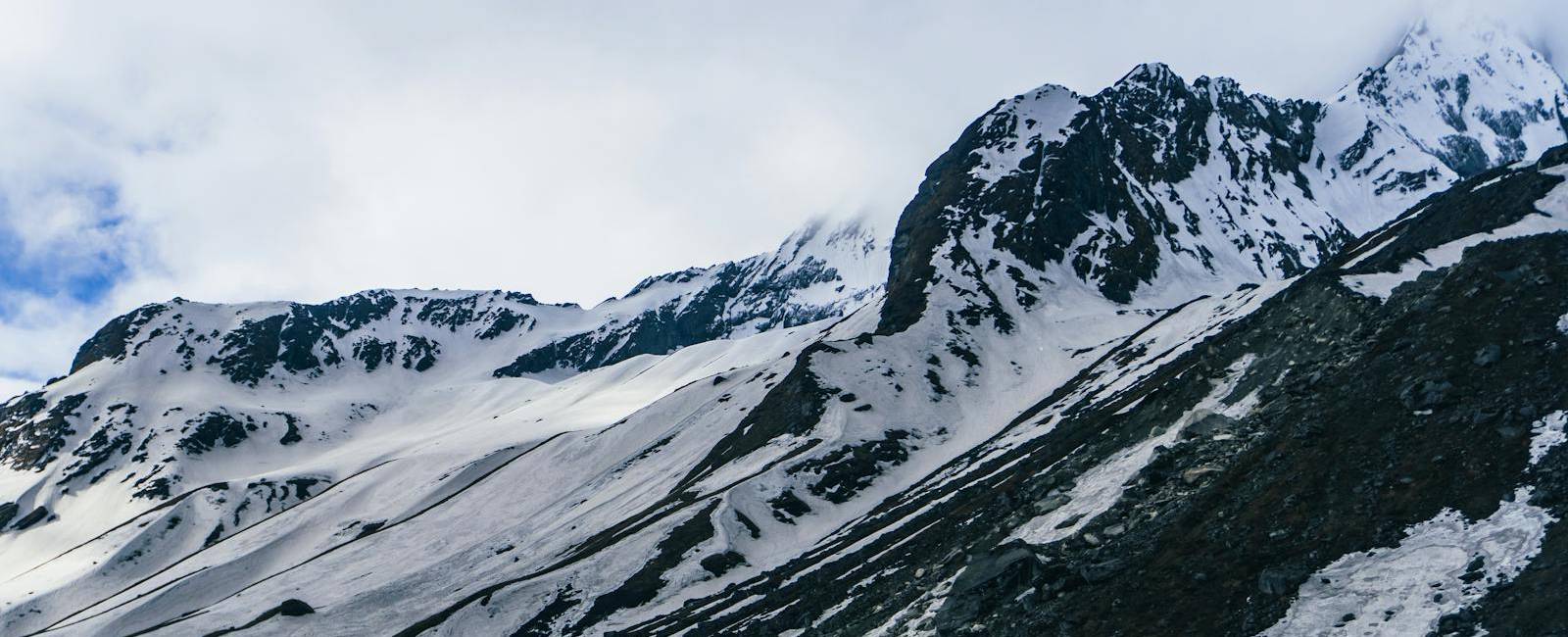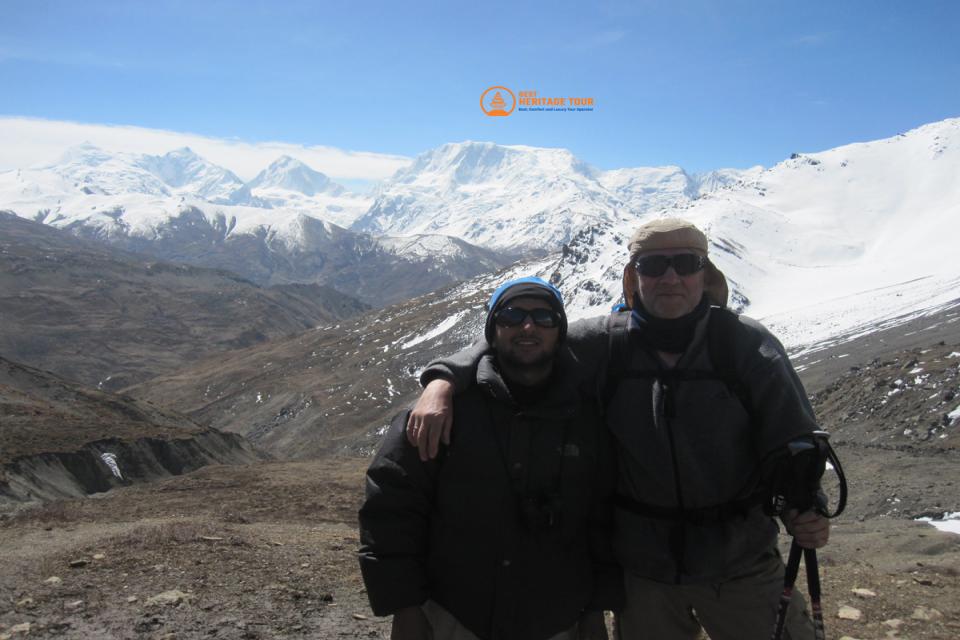The Nar Phu Valley Short Trek is an off-the-beaten-path adventure in Nepal, offering trekkers a unique combination of rugged terrain, remote landscapes, and rich Tibetan culture. With altitudes ranging from 2,000 meters (6,561 feet) to over 5,000 meters (16,404 feet), it’s essential to be well-prepared for the trek. Proper packing ensures comfort, safety, and effective acclimatization to the changing weather conditions and high-altitude challenges. Whether you’re exploring remote villages or navigating rocky paths, this comprehensive packing guide will ensure you’re fully equipped for an unforgettable trekking experience in the Nar Phu Valley.
Here’s your complete gear checklist, organized body-part-wise, with expert recommendations for each essential item to maximize your trekking success.
1. Upper Body Clothing
Layering is essential on the Nar Phu Valley Short Trek, as temperatures can range from warm to chilly, especially at higher elevations:
-
Moisture-Wicking Base Layers (2–3) – Crucial for sweat management, keeping your body dry and comfortable during physical exertion.
-
Insulating Fleece Jacket or Softshell (1) – Necessary for warmth during cooler mornings and evenings in the Nar Phu Valley.
-
Compact Down Jacket (1) – A lightweight, warm jacket that is ideal for cold nights and high-altitude campsites.
-
Waterproof, Windproof Shell Jacket (1) – Protects against the unpredictable weather of the Himalayas, including rain and snow.
-
Quick-Dry Trekking Shirts (2–3) – Breathable and lightweight shirts for layering, especially in warmer lower altitudes.
-
Thermal Hoodie or Pullover (1) – A must-have for added warmth on colder days in the higher regions.
2. Lower Body Clothing
Adaptability is key for lower body clothing as you’ll experience both hot and cold conditions:
-
Lightweight Trekking Pants (2 pairs) – Convertible trekking pants are ideal for variable weather. Zip-off pants offer cooling options during warmer days.
-
Thermal Base Layers (1–2 pairs) – These layers are essential for warmth on colder mornings and nights, particularly above 3,000 meters.
-
Waterproof Pants or Poncho (1) – Protect yourself from rain, especially during the monsoon season.
-
Breathable Underwear (3–4 pairs) – Quick-drying underwear to prevent discomfort during long trekking days.
3. Head and Hand Gear
Protect your head and hands from the elements with the following essentials:
-
Sun Hat or Cap (1) – A must-have for sun protection during the trek’s lower altitudes.
-
Warm Woolen Hat or Beanie (1) – Essential for warmth, particularly at higher elevations where temperatures can drop below freezing.
-
Buff or Neck Gaiter (1) – A versatile piece of gear that offers protection from dust, wind, and cold.
-
UV Protective Sunglasses (1) – Protect your eyes from UV rays and glare from the snow and sun.
-
Headlamp (1, with extra batteries) – Essential for navigating through the valleys early in the morning or at dusk.
-
Fleece Gloves (1 pair) – Lightweight gloves for colder nights and mornings in the Nar Phu Valley.
-
Insulated Waterproof Gloves (Optional) – For additional warmth during cold spells at higher altitudes.
4. Footwear and Socks
Your feet will be working hard on rocky, uneven trails, so proper footwear is essential:
-
Sturdy Waterproof Hiking Boots (1 pair) – Opt for well-broken-in boots that provide ankle support and protection on rugged trails.
-
Camp Shoes or Sandals (1 pair) – Relax and rest your feet in comfortable camp shoes after a long day of trekking.
-
Wool Trekking Socks (3–4 pairs) – Breathable, moisture-wicking wool socks to keep your feet dry, warm, and blister-free.
-
Sock Liners (Optional) – Useful for preventing blisters during long trekking days, especially in wet conditions.
5. Bags and Trekking Essentials
Choosing the right bags for the Nar Phu Valley trek ensures that you have everything you need, without overloading yourself:
-
Backpack (40–50L) – A lightweight, comfortable pack with padded straps and a rain cover. It should fit all your gear, including your sleeping bag and clothes.
-
Daypack (15–25L) – For daily essentials, especially if you’re using a porter for the bulk of your gear.
-
Rain Cover for Backpack (1) – Keeps your gear dry during unexpected rain showers.
-
Trekking Poles (1 pair) – Crucial for support and balance, especially on steep and rocky sections of the trail.
-
Water Bottles / Hydration System (2L) – Staying hydrated is essential, so make sure to carry enough water for the day.
-
Water Purification Tablets / Filter Bottle (1) – Important for ensuring safe drinking water along the trek.
-
Sleeping Bag (Rated to -10°C) – A quality sleeping bag is essential for the cold nights at higher altitudes.
-
Quick-Dry Towel (1) – Compact and quick-drying, ideal for freshening up after a day on the trail.
6. Toiletries and Personal Hygiene
Maintaining hygiene in remote areas is crucial for both comfort and health:
-
Toilet Paper / Tissues (1 roll) – Essential for bathroom breaks in regions with limited toilet facilities.
-
Wet Wipes / Hand Sanitizer (1) – Keep your hands clean during the trek, especially in areas without running water.
-
Biodegradable Soap / Shampoo (1) – Eco-friendly soap for washing at teahouses or campsites.
-
Toothbrush & Toothpaste (1 set)
-
Sunscreen (SPF 30+) – Protect your skin from the harsh sun at higher altitudes.
-
Lip Balm (with SPF) – Prevent chapped lips, a common issue in dry, high-altitude environments.
-
Menstrual Products (if applicable)
7. Health, Safety, and Electronics
Your health and safety are paramount on a trek through such a remote region:
-
Basic First Aid Kit (1) – Include items such as altitude sickness medication, blister care, painkillers, and other essentials.
-
Bug Spray (1) – Essential for protection against mosquitoes, especially during lower-altitude sections.
-
Power Bank / Solar Charger (1) – Limited charging opportunities in remote areas make this a vital piece of equipment.
-
Camera / Smartphone (1) – Capture the stunning landscapes of the Nar Phu Valley trek for memories that last a lifetime.
-
Offline Maps or Trekking App (1) – Helpful for navigation through the remote trails of the valley.
-
Travel Insurance (1) – Make sure your insurance covers high-altitude trekking and helicopter evacuation if necessary.
8. Documents and Money
Essential documents and money should be well-organized and easily accessible:
-
Passport (with 2 copies) – Required for permit processing.
-
Nar Phu Valley Trek Permit (1) – A special permit is required to enter the restricted Nar Phu Valley region.
-
Passport-Sized Photos (2) – Necessary for permits.
-
Travel Insurance Certificate (1) – Proof of insurance in case of emergency evacuation.
-
Cash (Nepali Rupees) – Limited access to ATMs in the remote regions of the trek, so carry sufficient cash.
Optional Extras (But Useful)
These items are not essential but can make your experience more enjoyable:
-
Energy Bars / Electrolyte Tablets – Provide quick energy and hydration during long trekking days.
-
Notebook and Pen – Perfect for journaling the experience or keeping track of your progress.
-
Small Lock – Keep your belongings secure when staying in teahouses or lodges.
-
Earplugs and Eye Mask – For a restful night’s sleep in shared accommodations.
Final Tips for a Successful Nar Phu Valley Trek
-
Pack Light, But Smart – Every extra kilogram counts, so prioritize multi-use items and avoid packing unnecessary gear.
-
Break in Your Boots – Make sure your boots are well-worn before the trek to avoid blisters.
-
Layer Your Clothing – Dressing in layers allows you to adjust to changing weather conditions throughout the day.
-
Stay Hydrated & Rested – Proper hydration and adequate rest are essential for acclimatization to the higher altitudes.
-
Respect Local Culture and Environment – Follow Leave No Trace principles and respect the Tibetan culture of the region.
Gear Up for the Nar Phu Valley Short Trek: Your Ultimate Adventure Awaits
The Nar Phu Valley Short Trek offers a once-in-a-lifetime journey through one of Nepal's most scenic and culturally rich regions. By packing the right gear and following these tips, you’ll be fully prepared for an unforgettable trek through the rugged and beautiful Nar Phu Valley.


